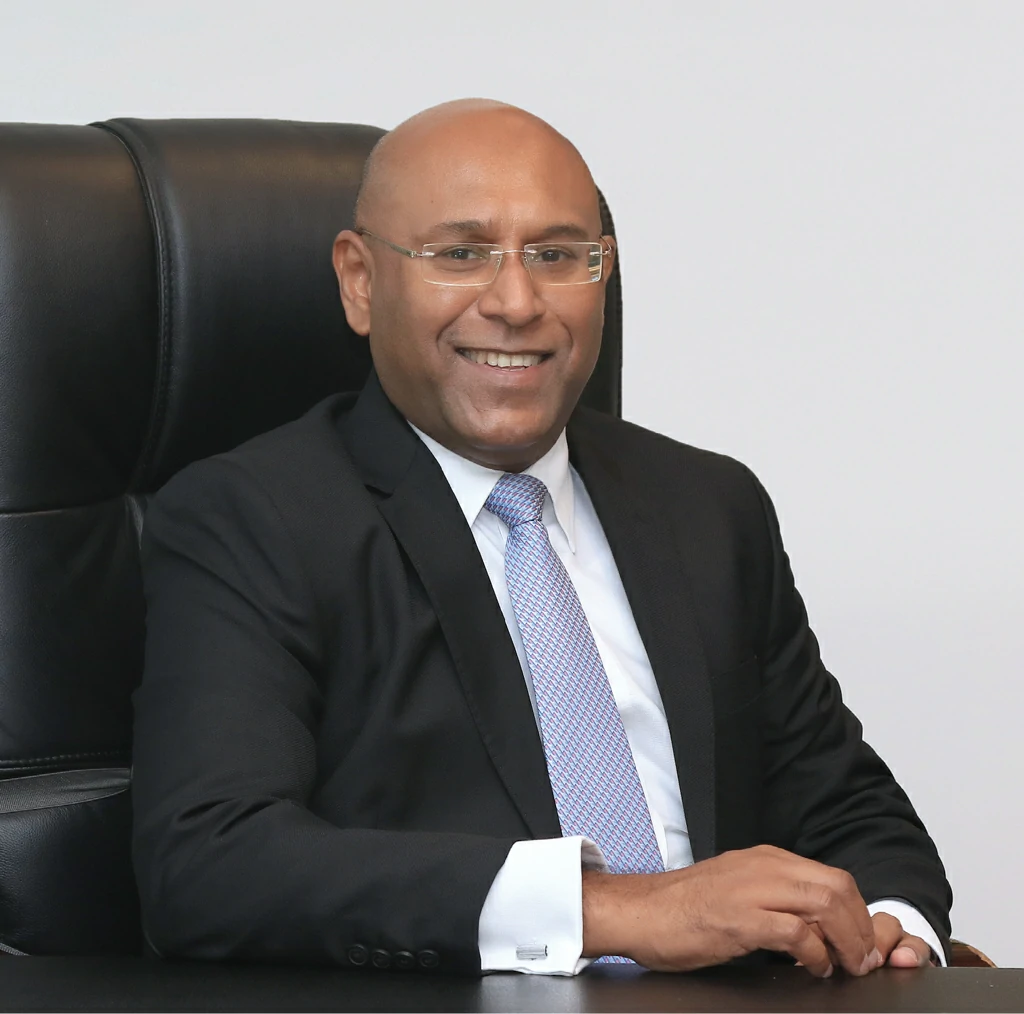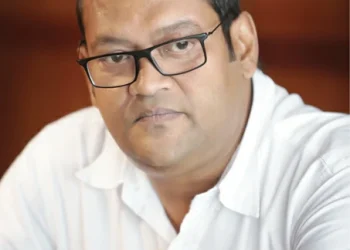
In a journey spanning over two decades, Pan Asia Bank has strived to create a performance driven culture, where the bank evolves with the needs of the customer. Dimantha Seneviratne, CEO and Director, Pan Asia Bank, comments on how this approach has contributed to the bank’s rapid development.
By Keshini de Silva
Could you tell us about Pan Asia Bank’s performance journey over the years?
Pan Asia Bank completes 21 years this year. Today we have a presence in all major towns with 80 branches and a staff of around 1,450.
Our performance in the recent past has been quite significant in both balance sheet growth and profitability growth. In terms of balance sheet growth, the total asset book which in 2013 was 65 billion rupees, has grown to 125 billion rupees today. Over a three-year period, we have almost doubled the balance sheet. With regard to profitability, in 2013 we ended the year with 115 million rupees profit after tax (PAT). This was at a time when the banking sector faced the gold loans debacle. In 2014, we made a PAT of 415 million rupees and in 2015 we achieved a milestone by recording one billion rupees PAT.
We have shown that these profits are sustainable and come from all sectors SME, Retail, Corporate, Trade, Cards, Leasing, and Treasury. For the first half of this year, we recorded a PAT of over 600 million. Quarterly figures are being finalised for the third quarter and we are confident that the achievements will be in line with budgeted numbers.
Have there been other notable achievements?
Our most significant achievement, thus far, is getting into the elusive ‘1 Billion Club’ in terms of the PAT we recorded last year. The other notable accomplishment is surpassing an asset base of Rs. 100 billion. Both are key milestones we reached in December last year.
In addition, the bank was recognised, for the third consecutive year, as the fastest growing commercial bank in Sri Lanka by the London based Global Banking and Finance Review, which noted these milestones. Our ‘Daskam Children’s Savings Account’ product was also awarded the Most Innovative Product in 2016 by the same institution. Unlike other children’s savings accounts, where the child will receive a gift at certain milestones or birthdays, we were thinking along the lines of coming up with a product that offers a more meaningful and useful benefit to the child. So Daskam Children’s Savings Account was designed to offer a ten per cent bonus deposit on top of every customer deposit till the child reaches the age of 12. It also pays interest on the total balance. Therefore, when the child reaches 18 years, he or she will have a sizable fund that can be used for higher education.
Pan Asia Bank Has Been Able To Understand Customer Requirements And Introduce Products And Services To Suit These Requirements. That Has Been Our Forte. It Is Something Reflected In Our Tag Line “The Understanding Bank”.
Pan Asia Bank was also the only private bank recognised at the National Chamber of Commerce Awards in 2015 and has been acknowledged for our Human Resources practices by the Sri Lanka Institute of Training and Development. Most recently, we were recognised as the ‘Best Employer Brand 2016′ at the South Asian Partnership Summit and Brand Awards held in October 2016. These accolades from international and local organisations are a source of motivation for us.
What are the bank’s unique products?
Pan Asia Bank has been able to understand customer requirements and introduce products and services to suit these requirements. That has been our forte. This aspect is reflected in our tag line ‘The Understanding Bank’.
For example as a result of understanding customer needs, we came up with one of our Blue Ocean strategy products, the ‘Sammana’ loan scheme for retired pensioners, which was introduced at a time when banks overlooked this sector. Pan Asia Bank tied up with the Department of Pensions and insurance companies to introduce this loan scheme along with a life insurance policy. This combination has significantly contributed to our growth in this sector. In turn, these loans have been used for various economic activities by retired Government pensioners, so that they can continue to lead a productive and independent life. ‘Ranaviru Harasara’ is another similar product we introduced for the families of disabled soldiers, those who were killed in action or those missing in action. Another financial product that we are known for is the Daskam Children’s Savings Account, which I described earlier.
‘Suwasavi’ is another unique deposit product that comes with a hospitalisation cover up to 15 per cent of the deposit value.We continue to focus on developing new products based on customer requirements.
Could you elaborate on the bank’s key growth strategies that have enabled its success?
Our key strategies are based on understanding the customer. There are many strategic discussions to align the bank in this regard. It is a 20 year old bank; therefore there are different cultures that must be unified.
In terms of products, we are looking at the Small and Medium Enterprises (SME) sector as a major driver. Rather than pursuing larger corporates that bank with other financial institutions, another market we are looking into is corporates with a trade background. Being a midsized bank, although we handle large corporates, we are developing a good set of midsized corporates with trade requirements as part of the strategic drive. Our solutions are designed to cover non-fund income, exchange income and commission income. In addition, our strategy extends to offer an entire array of personal banking solutions including personal loans, housing loans and credit cards.
We are also focused on reducing our funding cost and are looking at increasing our Current and Savings Account (CASA) base. For this purpose we employ different strategies such as creating awareness and the use of promotions to improve on customer savings habits. This is why we introduced the Champion Saver Account, where an interest rate of eight per cent is applied. Recently, we also introduced the Investment Planner, which gives you the opportunity to save for a lump sum in a specific number of years. Similarly, various savings products have been introduced to support the low cost funding base (CASA).
We are also looking at reducing the cost to income ratio and improving efficiencies. While the cost to income ratio was in the 60s two years ago, it has now significantly reduced to a low 50s and our turnaround time has improved. People driven strategies are also important to us. Our achievements would not have been possible without well-motivated and professionally qualified staff. This includes developing personnel, giving the right person the right opportunity and giving them the freedom to innovate. We have introduced a performance driven culture at the bank. Recently, we introduced a talent pool for the high performing staff. They are nurtured and provided opportunities to grow and take up future leadership roles.
What more can be done to improve staff engagement and performance driven culture?
We try to keep the morale up. We have discussions with the Joint Consultative Committee of the bank, which is made up of representatives from each division. They tell us their grievances, ideas and suggestions and we try to provide solutions and implement their ideas. I have a regular Coffee with CEO session where irrespective of their grade, staff is identified from various branches and they get an opportunity to share their concerns and experiences. We also introduced a staff newsletter, to communicate the bank’s achievements and staff achievements. We also launched a talent show, for employees to showcase their skills. Lots of staff engagement activities are encouraged by the bank, so all will get opportunities to interact and feel part of the team, and of course we share the benefit of our success with our staff.
We Are Diversifying Our Portfolio To Ensure We Have Different Income Sources. We Have Also Strengthened Our Management Team With Experienced Professionals, While Existing Staff Who Have Shown Potential Have Been Promoted.
In addition, we have introduced six core corporate values, namely, teamwork, strive for excellence, commitment, mutual trust, act with courage and integrity, dependability. Staff abide by these values and are evaluated based on living these values during the annual performance evaluation.
We are also mindful of staff retention and attracting young talent to the industry, which is becoming increasingly difficult. Generation Y expects quick results. They also look for an enjoyable and flexible atmosphere because you spend up to 12 hours a day at the organisation. Creating a welcoming and rewarding culture helps us reduce staff turnover and create a performance driven environment.
How have the Board of Directors and Management team executed on these strategies?
The direction coming from the Board of Directors is strategic and very clear. We have an experienced panel of Board members who have proved their mettle in various fields. They bring a wealth of experience and are insightful in terms of strategies and our future direction.
We are not on aggressive mode, but apply cautious growth to ensure that we achieve sustainable profits. We are diversifying our portfolio to ensure different income sources. We have also strengthened our Management team with experienced professionals, while existing staff who have shown potential have been promoted to handle key functions. We work as a team to drive the bank forward and that is the hallmark of our success.
How has the bank used social media to take the brand to younger consumers?
This is a key area and it factors into our future plans for the bank. Currently, we have a Facebook page, with approximately 220,000 likes, and have a presence across other social media platforms such as twitter and Youtube. We use these platforms to market our products to the youth, take our message to them and more importantly to have interactive sessions with youngsters. We have to come to terms with the fact that the younger generation does not look at traditional media. However, they are an important segment as they are the future of banking. In the current context they may not create a sizable market opportunity as they may be youngsters who have just graduated from school or are employed in their first job. But they will be banking with us in the future. Social media platforms also give us good referrals and act as a medium to get feedback.
What more do you believe banks can do to ensure banking in Sri Lanka is more accessible and on par with international standards?
The banking sector in Sri Lanka has a total asset base of around 8.5 trillion rupees while the finance industry has a base of around 1.5 trillion rupees. Naturally, this sector is growing with the economy. However, there is quite a large unbanked rural population in the country, which is yet to be tapped into. Even in certain towns, there are people who are still a little reluctant to approach a bank. Their financial needs are looked after by unregulated financiers who are not on the radar, and therefore these people are at risk of being exploited. The entire banking sector should ensure this unbanked population comes into the banking sector, not just to get their deposits, but to ensure they benefit from the services and various financial products on offer
This Needs To Change To A System Where A Customer’s Cash Flow, Rebate And Employability Is Evaluated And They Are Provided Loans. Currently Many Banks Are Only Focused On Micro Financing.
Another aspect that needs to be looked into is the culture of requesting security before providing a loan. This needs to change to a system where a customer’s cash flow, repayment capability and employability are evaluated to provide loans.
In terms of ensuring the sector is on par with the global banking service, digitizing the sector is important. Making use of the telecommunication channels to reach customers is a key aspect. Customers today get their remittances on the mobile, which ensures an ease in banking. Gone are the days when you would physically go to a place to pay utility bills or even pay private school fees. This is where Lanka Clear and the ATM network play a role. Pan Asia has also moved to a common ATM network so all our customers have access to a network of around 3,000 ATMs. There is also Common Electronic Fund Transfers and more importantly Internet Banking where customers can transfer funds from home or office. To ensure better connectivity and service we are partnering with all the leading telecommunication networks in Sri Lanka to add on various payment channels.
Today, even the payment for a cab may be made through a mobile app. Pan Asia Bank is also in the process of introducing a mobile app for banking. These are the services that the next generation expects and we must be able to introduce products, which make banking easy.
Considering Pan Asia Bank’s rapid growth, are there any other plans for the future?
Last year we recorded a 37 per cent growth, while the year before we achieved a 25 per cent growth. Therefore, a 37 per cent growth on a balance sheet that had already grown 25 per cent is quite substantial. This year too there has been growth, but as with many banks, it has been at a moderate pace. This is mainly due to the regulator expecting a certain reduction in the growth rate, to control excessive credit growth. To avoid the financial market overheating, the monetary policy is being tightened. This is why interest rates have also risen.
All banks need sufficient capital or funding to grow and we are working on our capital growth plan. Our main funding is through deposits, funding from the debt market, long-term issues and debt instruments. Another aspect for growth is the expansion of our footprint. We will be expanding our branch network, while there are several relocations tipped to take place as well.
The guidance of the Board of Directors is very important in our plans. We grow as a team, therefore staff support is important. In addition, we must acknowledge the contribution of our customers because they are the most significant part of our achievements.





